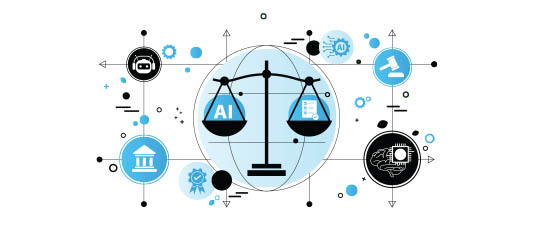For WorldatWork Members
- Weather the Storm with this Business Disruption Policy Guide, Workspan Daily Plus+ article
- Be Intentional: Communicating Your Employee Value Proposition, Workspan Daily Plus+ article
For Everyone
- How TR Pros Can Handle Increasing Volatility in the Workplace, Workspan Daily article
- Have You Baked Natural Disaster Adjustments into Your Sales Incentive Plans? Workspan Daily article
- Who Gets Paid When Bad Weather Shuts Down Work? Workspan Daily article
Disasters — either natural or man-made — seem to be occurring at an ever-increasing rate. Wildfires, floods, hurricanes, earthquakes, tornadoes, tsunamis, diseases, pandemics, terrorism, riots ... the list goes on. When a local, regional, national or international event happens, it can significantly impact organizations, their operations and their workers.
In such moments, total rewards (TR) professionals have the chance to step forward in a major way, providing resources and services that can enable individual and collective continuity, support, comfort and security.
This article aims to inform or remind TR professionals of many of the tools they have at their disposal to help workers — and the organization at large — during these times of need. It is broken down into three TR areas:
- Financial and payroll
- Core benefits
- Emergency benefits
Consider each area’s bullet points, generated by WorldatWork content directors and council advisors, as fodder for an idea board or strategy checklist. Discuss elements and their corporate and workforce impacts with your functional, departmental and corporate teams. Explore what is possible and then determine an appropriate strategy.
Insights and commentary are also provided below to foster organizational reflection and analysis and spur action.
Financial and Payroll
A disaster likely will have a monetary impact on affected workers. According to Sue Holloway, a compensation content director at WorldatWork, TR professionals can help workers by:
- Ensuring regular compensation amounts and cycles are not disrupted;
- Maximizing methods of financial delivery to address expediency, accessibility and security;
- Providing access to supplemental financial resources; and,
- Identifying external assistance programs.
“It’s important to make sure employees receive their pay checks/deposits, plus address situations that can impact if and how workers are paid if they cannot work or get to work, and if the business or worksite is closed,” Holloway said. “It’s necessary to follow wage-and-hour and leave laws, as well as any collective bargaining or employment agreements. Organizations may want to allow workers flexibility and consider doing more for their workforce — like offering emergency wage advances or loans, providing additional paid or unpaid time off, or just giving special grants/money directly to affected employees.”
Specific and additional action items may include:
- Allow workers to access a portion of their wages early to cover urgent expenses (e.g., temporary housing, food, clothing).
- Set up a special fund (or partner with a charity) to provide financial grants or low-interest loans to impacted employees.
- Create a reference guide with resources that can help defray workers’ costs during this time. Include local financial and in-kind assistance programs, shelters, food pantries, and volunteer organizations. Continuously update as additional resources become available.
- Consider payroll methods that may allow financial security:
- Determine a short-term payment strategy for workers who are unable to work.
- Provide debit cards for workers who don’t have bank accounts, ensuring they can still access funds immediately.
- Allow workers to sign up easily for direct deposit or paycards so they receive their pay without relying on mail service. Offer short, clear instructions to help them navigate this process and/or system. If direct deposit or paycards aren’t an option, arrange for a safe way to distribute paper checks.
Core Benefits
With their responsibility for benefits, TR professionals are uniquely positioned to leverage core benefits and establish emergency benefit provisions, said Alicia Scott-Wears, a WorldatWork compensation content director.
Constructing a disaster response framework ahead of a crisis can help maximize support efforts, she said. This may include an annual review of current benefits to identify disaster-ready provisions, including employee assistance programs (EAPs), hardship withdrawal options and concierge services.
“This review also allows rewards professionals to identify gaps where temporary policies, such as paid emergency leave, may be warranted and to consider lessons learned from previous catastrophic events for any necessary additions or adjustments,” Scott-Wears explained.
A comprehensive toolkit can be developed to guide employees through available resources and provide clear instructions on accessing them during a declared crisis, she said.
Action items may include:
- Temporarily waive or reduce premium contributions for insurance (health, dental, vision, life, disability) or extend coverage for emergency medical needs related to the disaster.
- Provide resources (e.g., moving services, housing stipends) for employees who need to find new living arrangements. If applicable, tap into global mobility resources whose relocation/housing services, programs and tools help employees temporarily work internationally.
- Expand mental health benefits and/or arrange online counseling to help workers cope with disaster-related stress and trauma.
- Promote EAP resources that may be part of a core response package.
- Promote any benefit concierge services to help align needed offerings or determine benefits that can help.
- Be clear on retirement hardship withdrawal provisions and make the process as easy as possible for benefit-targeted employees.
Emergency Benefits
Additionally, benefits leaders can cultivate strong relationships with supplier partners to understand their disaster response capabilities, said Scott-Wears, and, where possible, establish agreements for expedited support services.
Action items may include:
- Coordinate or subsidize childcare for workers who have lost access to regular services due to the disaster.
- Offer paid emergency leave or expanded time off to handle personal affairs, care for family or relocate.
- Implement remote or alternative work schedules for workers dealing with relocation or event-impacted commutes.
- Encourage employees to help one another by matching financial contributions or donated leave to those directly affected by the disaster. This will likely require some setup provisions. Consult with accounting, tax and legal resources before initiating.
Focused Response Before, During and After
No disaster-related strategy consideration and response list can be all-encompassing or all-applicable. No two disasters — and no two impacted organizations, let alone two impacted workforces — are identical. And, what applies and works in one case may not necessarily apply or work in another. However, two additional guidance points are likely universal.
- When an unforeseen event triggers an immediate response, TR professionals and their organizations should consider ways to be most nimble, empathetic, action-oriented, accessible and communicative. Regarding communication, Scott-Wears advised, “Utilize multiple channels — emails, texts, intranet and online portals — to disseminate information effectively and keep employees informed” throughout the event.
- As a continuity planning exercise before an emergency occurs (and as a reflection and continuous improvement activity following such an event), consider how various scenarios may impact individual and collective aspects of compensation and benefits. Run strategy proposals through internal partners (e.g., finance, legal, executive) and external partners (e.g., providers of payroll, benefit, insurance and any related software services). Outline all determined processes and procedures in formal planning documents.
Editor’s Note: Additional Content
For more information and resources related to this article, see the pages below, which offer quick access to all WorldatWork content on these topics:







